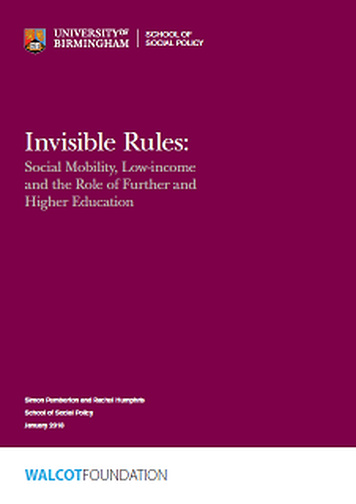Summary
A report on research we commissioned as part of our 350th anniversary year was launched at an event at the House of Lords on Tuesday 30 January 2018
We funded the University of Birmingham to undertake qualitative research on 40 former Walcot grantees (young people from low income Lambeth households) to map their journeys through Further and Higher Education and then into the labour market. Research Report Powerpoint from launch event FindingsFINDINGS
Advice and networks
Financing Further and Higher Education
Internships
Labour market reform
|
